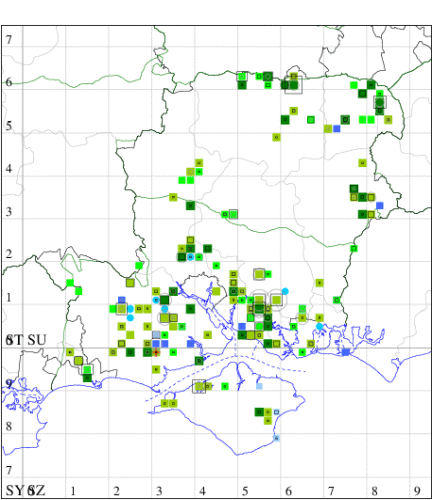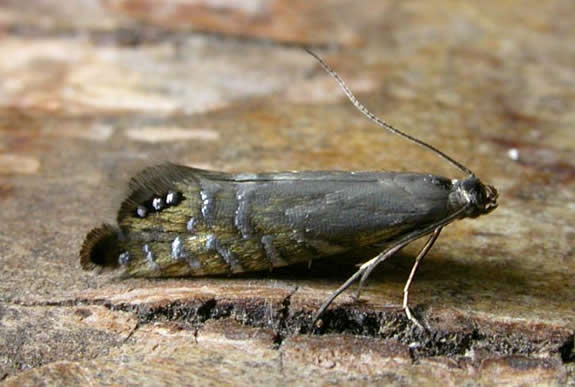Glyphipterix thrasonella
Checklist Number19.002 [B&F: 0397]
Verification
Record will normally be accepted but photo evidence may be required - check with CMR if not sure of identity
Classification
| Family: | Glyphipterigidae |
| Subfamily: | Glyphipteriginae |
| Genus: | Glyphipterix |
| Species: | thrasonella |
| Authority: | (Scopoli, 1763) |
Common in a wide range of marginal, aquatic habitats, including bogs, damp heathland and mosses, throughout the British Isles. Widespread and fairly common in Hampshire and on the Isle of Wight. Wingspan 10-15 mm. Generally considered to be day-flying, but often recorded over-night at light traps. The Glyphipterix form a distinctive group, in which the forewing has a characteristic bulge in the costal half of the termen, and appears distinctly folded longitudinally, although G. fuscoviridella is atypical. G. thrasonella has a diagnostic elongate coppery black mark at tonus, which include three silver dots (MBGBI Vol 2). Larva believed to feed within stems of various species of Rush, although the exact foodplant is uncertain.


The abundance in each month is indicated as follows:
 No records
No records Very occasional
Very occasional Irregular
Irregular Uncommon
Uncommon Off-peak, but not unusual
Off-peak, but not unusual Off-peak, but not unusual
Off-peak, but not unusual Main flight time
Main flight time| J | F | M | A | M | J | J | A | S | O | N | D | |
|---|---|---|---|---|---|---|---|---|---|---|---|---|
| Adult |  |  |  |  |  |  |  |  |  |  |  |  |
| Larval |  |  |  |  |  |  |  |  |  |  |  |  |




